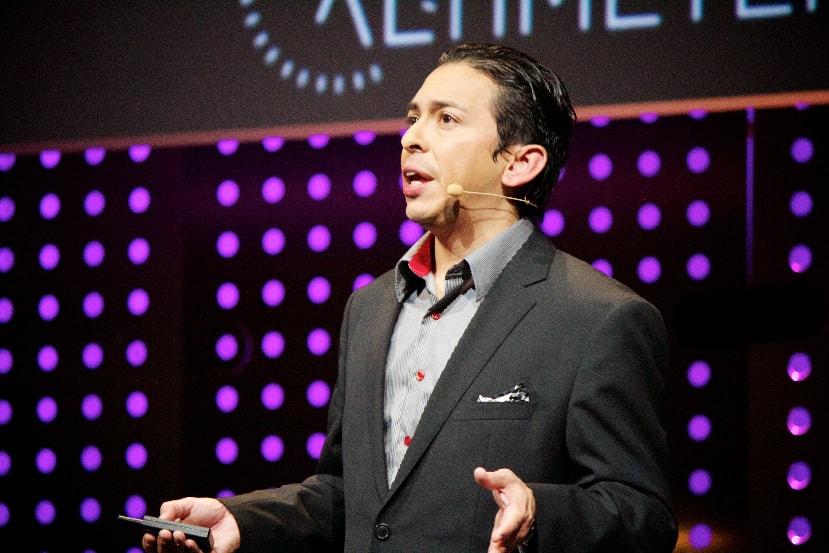
Leo Bertelli was gracious enough to invite me for an interview on the state and future of CX. The conversation was so engrossing that I wanted to share it with you here. I hope it helps you!
What do you think have been the most significant advances in CX in previous years?

You can’t talk about customer experience if you don’t appreciate what the word experience means – and as the author of a book on experience design, I struggled a lot to find some satisfying definitions and build on them.
You look at all these experts wielding their CX wands, trying to inspire companies to change; most of them have never taken a step back and asked themselves: what does experience mean, what do customers actually experience and what do we want them to experience? These are the most important questions to start your conversation.
A person’s experience can be summarized in a series of moments – if you want to understand the entire experience you have to address every feeling that is expressed in a certain moment instead of looking at it as a whole. If these moments are left to chance the picture is distorted – that’s what I think we’re missing at the moment.
As an analyst, anthropologist and a human being, I think the best experiences in our lives are recorded as memories – and that’s what we like talking about.
The main challenges around CX can seem obvious at the moment — what do you think is the most under-acknowledged challenge that brands are facing?
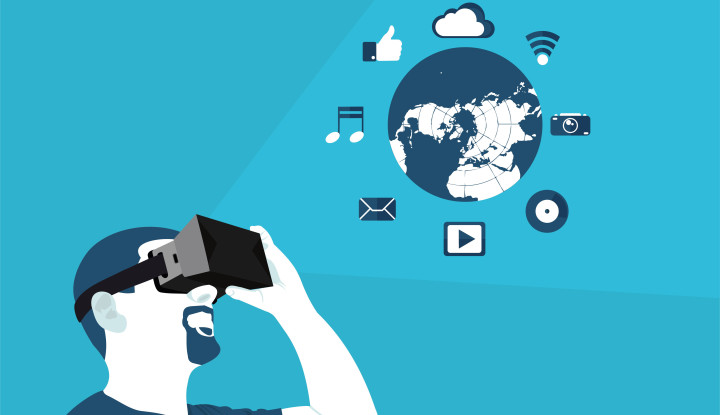
What’s happening today is many brands are trying to either improve their moments or modernize them. That could be through mobile, chatbots, AI, even VR and AR.
We tend to associate these new features with good experiences – so we do our best to make them frictionless and delightful. But I think we need to understand the meaning of ‘experience’ before we start executing – I want people to feel the moments first, and then design the experience around them.
Last year I wrote a series of follow-on articles after publishing X: The Experience When Business Meets Design, which introduces the idea of an experience style guide. We already have brand style guides in place which tell you what a brand should look like, but as consumers become more demanding and discerning, we will have to consider brands as a sum of experiences.
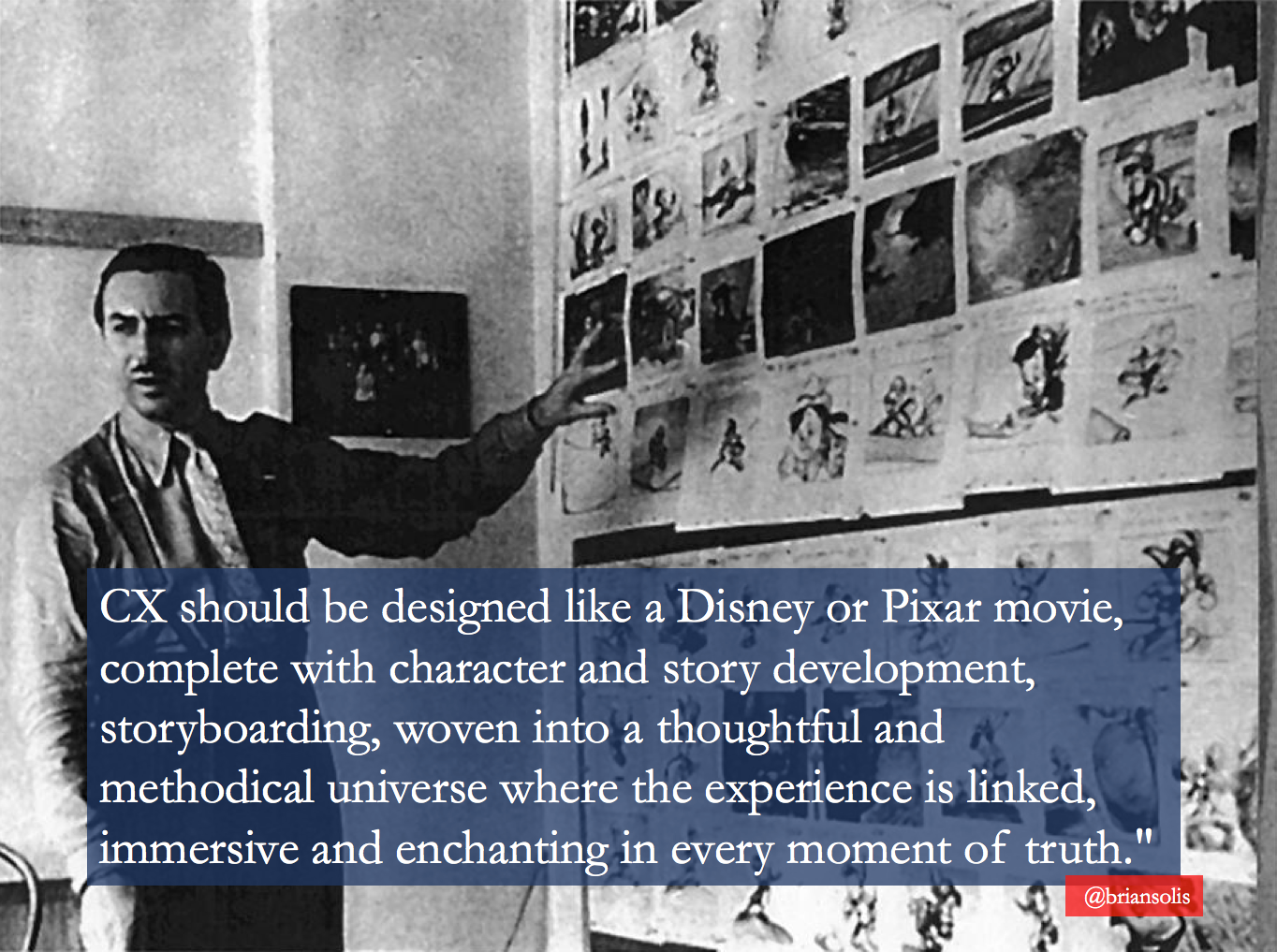
For example, if you go to Disneyland, you’ll see the park is a manifestation of experience architecture. I‘ve never seen a purer form of CX before, from the trashcans and the concrete to the building facades, all the way to the uniforms in the park, everything is designed to evoke a profound emotional response.
But if you visit Disney.com, you lose that depth and design of imagineering. If you go into a Disney hotel it feels like you’re completely disconnected from that magical experience. It’s easy to realize that the people who designed the e-commerce experience aren’t the same as the ones who created their “small world”.
I think we have a lot of work to do when it comes to designing and connecting experience design – very few brands think about how it works, how people interact with each other to create these moments.
How do you design the ideal experience? Is it possible to over-engineer this?

Any experience should be natural, desirable and sought after – I don’t think you could over-engineer something that matters to people if you understand what’s important to them.
What we’re seeing at the moment is people who are trying to create something that woos you, engages you or entertains you – we are witnessing the age of manufactured engagement.
Every experience has to begin with ‘what does the individual prefer and value?’ in order to work – just think about how many emails you have to delete every day; people are trying to reach you without understanding you and that’s a problem.
How about joining the dots between online and offline experiences?

This is an area where too many brands are still paying lip service without executing their actions properly. We can’t have the conversation about online, offline and the transcendent experience between the two because we haven’t looked at what our customers value, love, desire and how they behave. Once we do, we can find opportunities to design new, better, unified experiences online and in the real world.
This is what I usually call the experience divide. We should start by asking what’s our brand promise and then mapping the customer experience against that promise. If you do this you’ll quickly unravel the experience divides your company has. You’ll find out exactly where you’re failing and why.
This divide represents the reason why consumers are bypassing traditional means to get the experience they want.
I’ve done a lot of work with Google in the past couple of years for example, discussing the way in which empowered customers makes decisions and how their core values motivate them to take the next step – from their standpoint, brands are in dire risk of losing to the next generation of consumers.
What are the best examples of innovation in customer experience that you have seen?
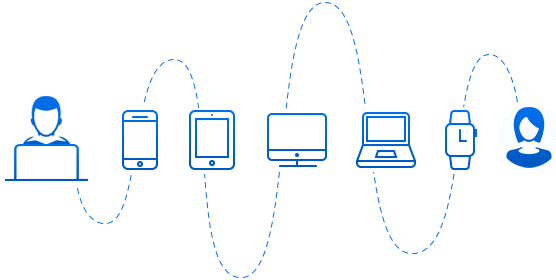
To be honest I always defer this question because it’s important to understand the mission in CX, which is designing your customer’s experience.
I think a better question to ask or answer is: What is valuable to the people we’re trying to reach, and how do we create experiences that matter to them?
When we look at brands and how they are delivering the experiences, we tend to get very tactical and technological very fast. We don’t explore enough about the trends happening behind the scenes.
This is very important as it shapes our digital transformation now. We are adding to existing experiences without fixing what’s broken and inventing or creating what’s new upon blank slates.
If we don’t fix that core problem which lies underneath the experience – such as lack of communication or collaboration internally, dated and disconnected touch points, aimless journeys, etc., we risk operating in a culture detached from what’s actually happening and is instead only focused on conversions, reach, and shareholder value. There’s much to fix and even more opportunities for innovation on every front.
These are the questions I’m exploring at the moment – how can we fix that? How can we build something new? What can we borrow from our archetypes of experience in order to create something new, and better?
Where do you see CX growing and evolving in the next 5x years?
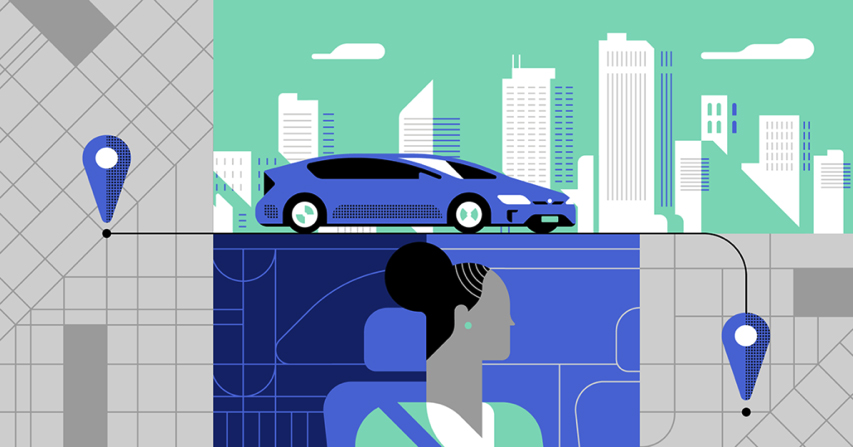
As experience architects, we have to start looking into the smallest places where CX is already benchmarked and build them into entire customer journeys.
Uber is often cited as an example of innovation and disruption. But what they’ve actually done, which is “breakthrough” innovative, but rarely mentioned, is changing the benchmark for a great customer experience when using an app as an integrated service.
So in many ways, whether you’re a dentist or a bank, you’re competing with Uber in terms of experiential standards. It’s fast, transparent, personal, frictionless, and evolving.
In the next few years, we have to look at where people are having great experience individually in order to integrate that in our services…especially outside of our industry. We will see our customers from entirely new viewpoints – and that will already be a massive step forward in itself.
Tell us a bit more about your latest book X: The Experience When Business Meets Design, and what you’re working on next?
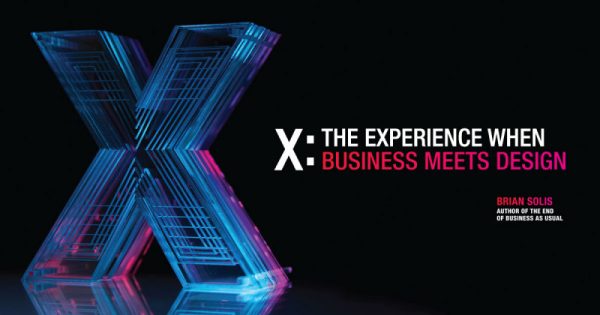
It feels like the book just came out yesterday as I haven’t been able to move on from that moment. In a way, the book was transformative for myself as an author because it forced me to change – you can’t talk about designing experiences for a digital economy if you’re not willing to disrupt yourself.
I found it ironic that I was going to ask readers to challenge their own conventions and beliefs and re-imagine experiences for a new world yet I was going to do so in basic book form.
X to me was a culmination of innovation – it took me about 3 and a half years to turn the concept into something tangible, and the process changed every aspect about how I operate, think and write. I learned from mobile behaviors and app UX and UI and translated those insights onto paper.
To follow that book up is almost too great a task – in fact, I’ve been trying to figure out what to do next that surpasses the effort. In the meantime, X has never been more timely and I’m giving it my full support.
Brian Solis
Brian Solis is principal analyst and futurist at Altimeter, the digital analyst group at Prophet, Brian is world renowned keynote speaker and 7x best-selling author. His latest book, X: Where Business Meets Design, explores the future of brand and customer engagement through experience design. Invite him to speak at your event or bring him in to inspire and change executive mindsets.
Connect with Brian!
Twitter: @briansolis
Facebook: TheBrianSolis
LinkedIn: BrianSolis
Instagram: BrianSolis
Youtube: BrianSolisTV
Snapchat: BrianSolis
The post Customer Experience, Where It is Now, and Where It Will Go Next appeared first on Brian Solis.